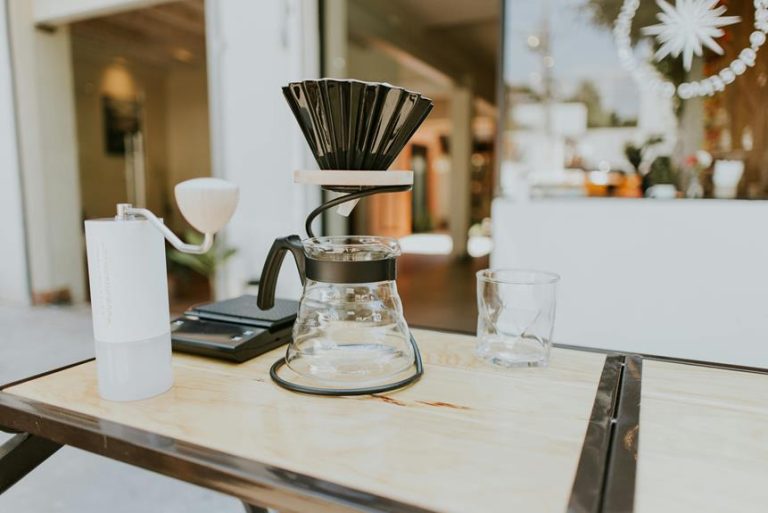Best Temperature for Brewing Coffee: A Comprehensive Guide

When we talk about the best temperature for brewing coffee, we can't overlook the delicate balance that impacts flavor extraction. We understand that the ideal range sits between 195°F and 205°F, but what does that really mean for our daily cup? Understanding the nuances of different brewing methods can elevate our coffee experience considerably. So, how do we guarantee we hit that sweet spot without burning our beans or under-extracting? Let's explore the essential factors that contribute to achieving the perfect brew.
Importance of Brewing Temperature
Brewing temperature plays an important role in extracting the flavors and aromas from coffee grounds.
By maintaining brewing consistency, we guarantee ideal coffee extraction, allowing us to enjoy the full spectrum of taste.
If the temperature is too low, we risk under-extraction, while too high can lead to over-extraction.
Both scenarios affect our overall coffee experience, making precise temperature control crucial.
Ideal Temperature Range
The ideal temperature range for brewing coffee typically lies between 195°F and 205°F (90°C to 96°C).
Within this range, we achieve best extraction, enhancing flavor profiles and ensuring brewing consistency.
It's essential to utilize temperature monitoring tools to maintain this range, preventing over-extraction or under-extraction.
Brewing Methods Overview
As we explore various brewing methods, we'll examine popular techniques that coffee enthusiasts use daily.
We'll also consider how temperature influences flavor extraction and the role of equipment in maintaining ideal brewing conditions.
Understanding these elements will help us appreciate the intricacies of crafting the perfect cup of coffee.
Popular Brewing Techniques
Crafting the perfect cup of coffee relies heavily on the brewing technique we choose.
From the rich flavors of French Press and Turkish Coffee to the precision of Pour Over and AeroPress, each method offers unique characteristics.
We can also enjoy the convenience of Instant Coffee, the smoothness of Cold Brew, or the boldness of Espresso Shots and Nitro Coffee, alongside traditional Drip Coffee and Siphon Brewing.
Temperature Impact on Flavor
Each brewing technique not only brings out distinct characteristics but also requires careful attention to temperature, which greatly impacts the flavor profile of our coffee.
Ideal temperatures enhance coffee extraction, allowing us to achieve a perfect flavor balance. If it's too high, we risk over-extraction and bitterness; too low, and we miss out on the rich, nuanced flavors we seek.
Equipment and Temperature Control
Understanding the interplay between brewing equipment and temperature control is essential for achieving the ideal cup of coffee.
We must consider the heat sources, such as stovetops or electric kettles, alongside precise tools like coffee thermometers.
Temperature for Different Methods
The brewing method we choose greatly influences the best temperature for extracting flavors from coffee.
For instance, with drip brewing equipment, we typically aim for 195-205°F to achieve ideal coffee extraction and flavor balance.
French press often prefers slightly lower temperatures around 200°F, while espresso demands higher temperatures near 190-200°F.
Understanding these temperature preferences is essential for enhancing our coffee experience.
Effects of Overheating Coffee
When we brew coffee at excessively high temperatures, we risk altering its flavor profile substantially.
This overheating can lead to the degradation of essential nutrients, diminishing the overall quality of our brew.
Understanding these effects is vital for achieving the perfect cup.
Flavor Profile Alteration
Over time, we've all experienced the bitter disappointment of a cup of coffee that just doesn't hit the mark.
When we overheat coffee, it disrupts flavor extraction and throws off the acidity balance. High temperatures can lead to excessive bitterness and a loss of desirable flavor notes, resulting in an unbalanced beverage that fails to deliver the rich complexity we seek.
Nutrient Degradation Risks
Excessive heat not only alters the flavor profile of our coffee but also poses significant risks to its nutritional content.
When we brew at high temperatures, we may encounter nutrient degradation effects, leading to a loss of antioxidants and essential compounds.
To guarantee ideal nutrient preservation, we should aim for brewing temperatures between 195°F and 205°F, safeguarding both flavor and health benefits.
Tips for Temperature Control
Achieving the perfect brew requires us to pay close attention to temperature control, as even a slight variation can greatly impact flavor extraction.
We should regularly perform temperature calibration on our brewing equipment to guarantee accuracy.
Common Myths About Brewing Temp
When it comes to brewing coffee, several common myths can mislead us about the importance of temperature.
Many of us cling to brewing misconceptions, like believing hotter is always better.
In reality, ideal brewing temperature ranges from 195°F to 205°F.
Temperature beliefs that suggest extremes often result in over-extraction or under-extraction, compromising flavor.
Let's focus on precise temperatures for the best brew.
Conclusion
In summary, understanding the best temperature for brewing coffee is essential for achieving a flavorful and balanced cup. By adhering to the ideal range of 195°F to 205°F, we can enhance our coffee experience, regardless of the brewing method we choose. With precise temperature control and the right techniques, we can avoid the pitfalls of under- or over-extraction. Let's embrace these guidelines and elevate our appreciation for the rich complexity of coffee.






